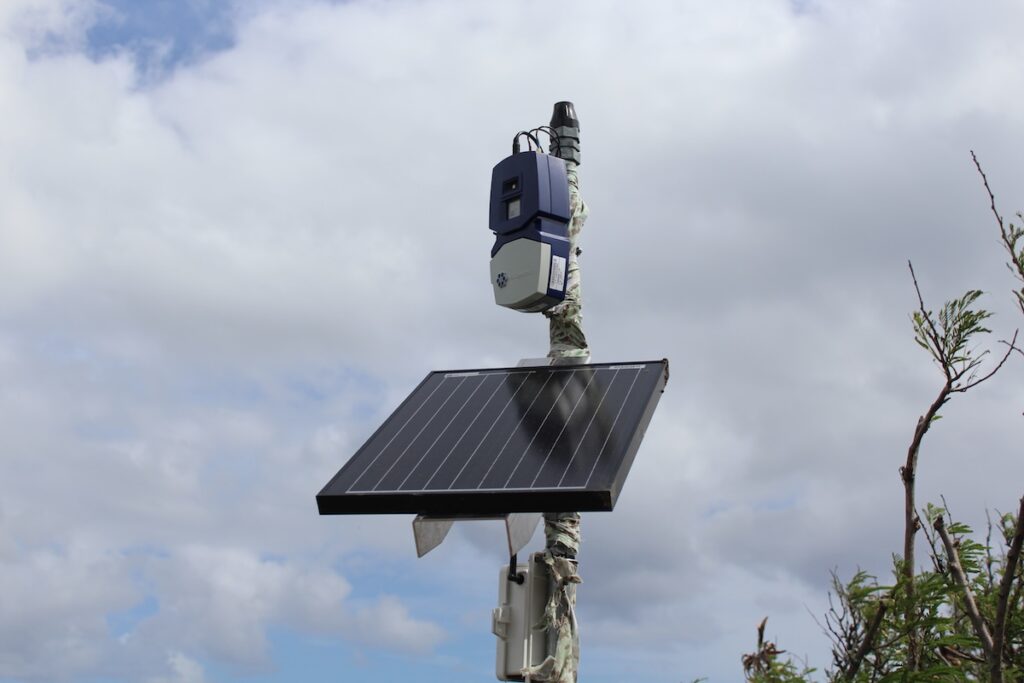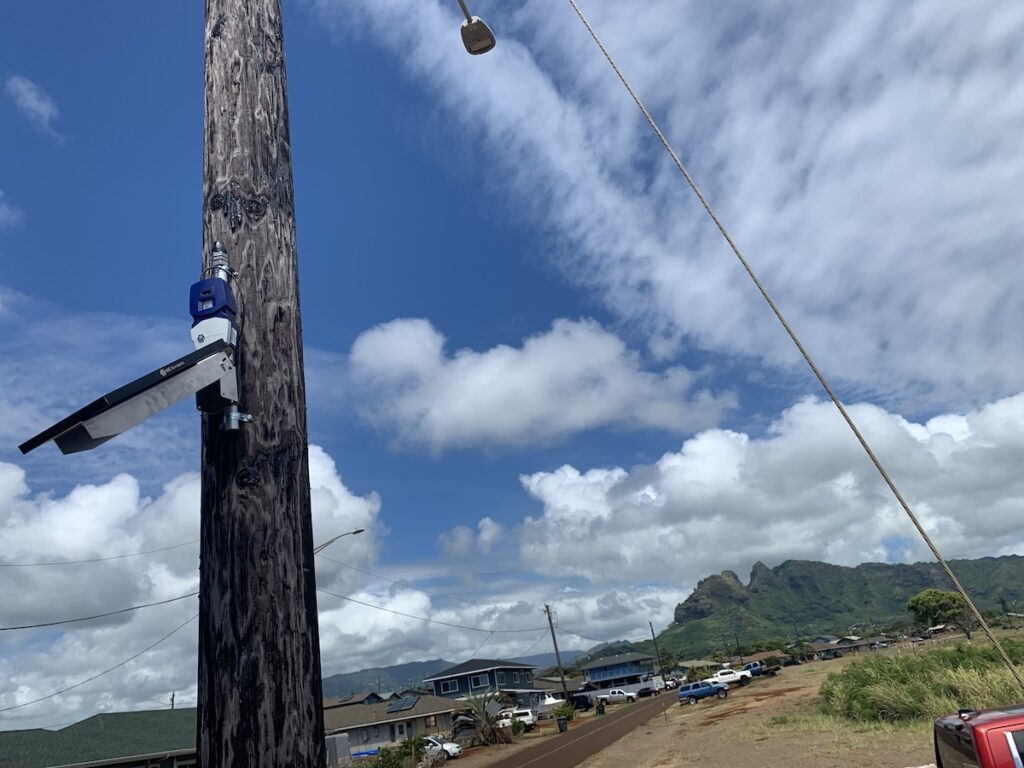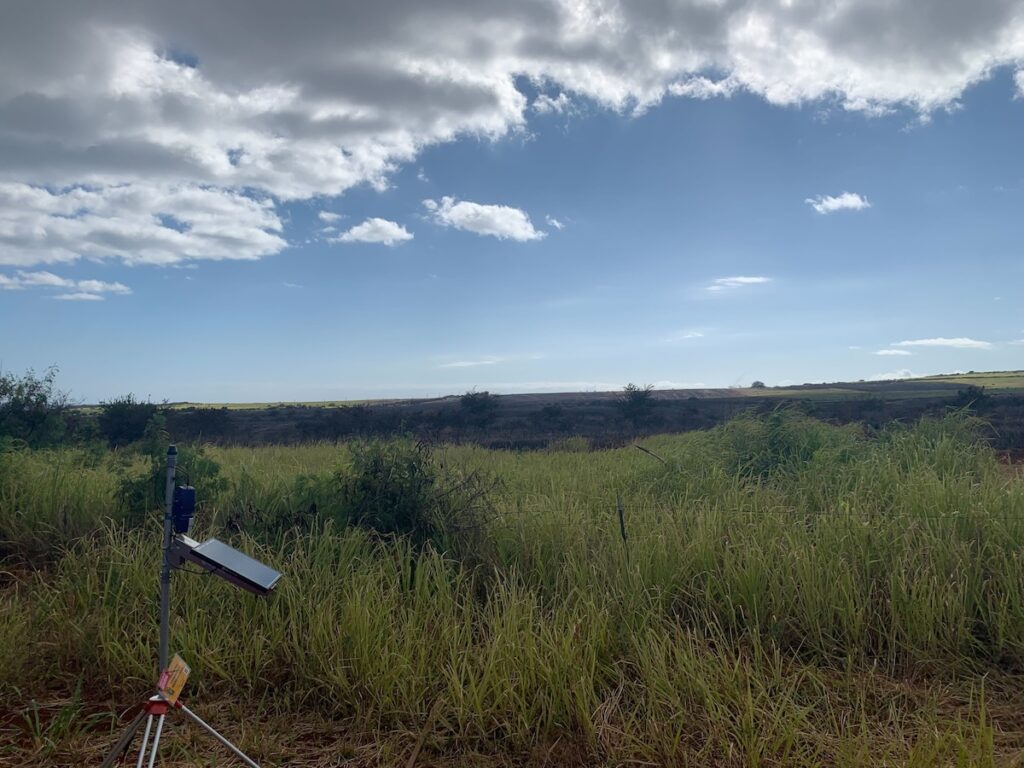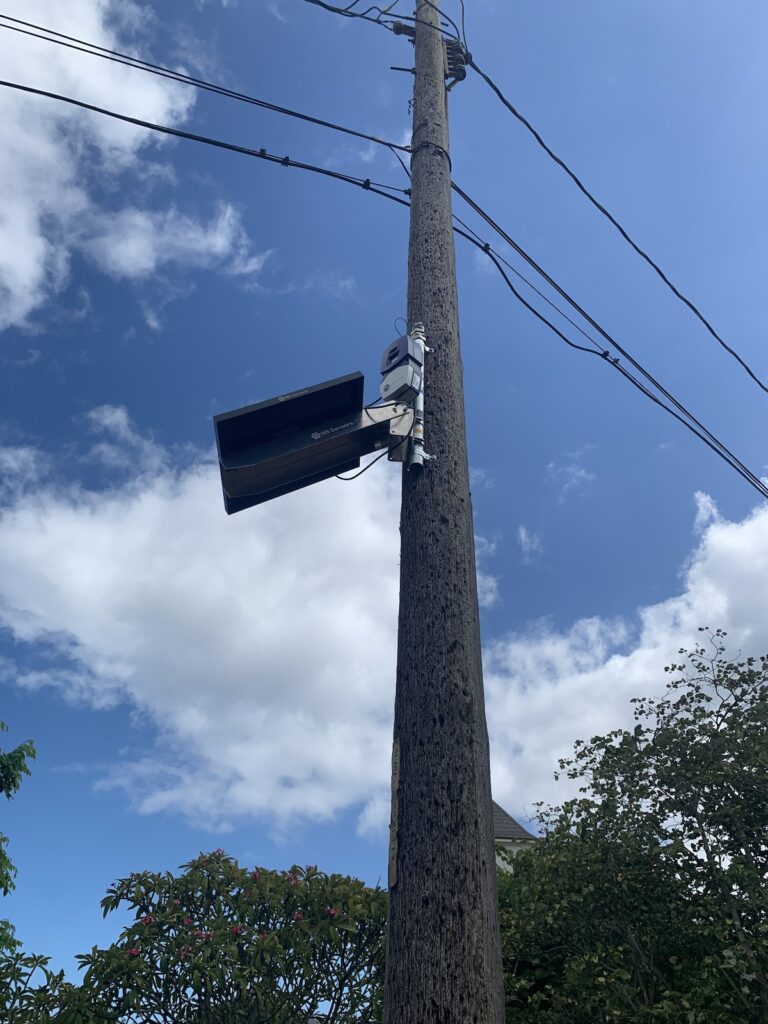Dozens of wildfire detection sensors are now deployed throughout Hawaii thanks to a partnership between TechNexus Venture Collaborative, tech firm N5 Sensors, and the Department of Homeland Security Science and Technology Directorate

One year after the deadliest U.S. wildfire in a century killed 111 people on Maui and devastated the Lahaina community, new sensors have been placed throughout the Hawaiian Islands to better detect fires before they spread. And they were deployed thanks to an effort led by TechNexus as part of a government program to source new technologies for early wildfire detection.
In total, 80 wildfire sensors have been placed throughout Hawaii as of August, the Department of Homeland Security Science and Technology Directorate announced this month. The artificially intelligent sensors, built by University of Maryland spinout N5 Sensors, effectively emulate the sense of smell. The sensors can identify when a fire begins, or if an earlier blaze has rekindled, and do it far faster than a human can.
With these high-end semiconductor sensors, which measure gasses and particulates generated by wildfires and don’t require a camera to identify flames, N5 can alert firefighters to a blaze before it spreads and provide first responders additional time to make life-saving evacuation decisions.
The sensors are also smart enough to distinguish between a wildfire and a campfire, or even someone cooking on a grill.

How TechNexus sprang to action
N5’s newest wildfire sensor, called N5SHIELD, was deployed after TechNexus was tasked with sourcing and incubating innovative wildfire detection technologies by the DHS Science and Technology Directorate.
TechNexus has worked with the DHS for seven years, spending the last four working on wildfire detection technology. TechNexus is part of the DHS Science and Technology Directorate’s Smart City and Internet of Things Initiative (SCITI Labs), in collaboration with Virginia Innovation Partnership Organization and Smart City Works. The SCITI Labs partnership works to research, develop and test prototype technologies in first responder tracking, communication, and sensing technologies.
The government tasked TechNexus with identifying better ways to detect wildfires earlier, and to source innovative ventures building technology that could make an impact.

TechNexus identified four ventures that had technologies that could be adapted to help detect wildfires. It provided selected ventures with initial funding to develop prototypes and tailor their tech to wildfires, worked to define business requirements and evaluation criteria, hired a lab to design and validate sensors, and coordinated field tests at prescribed burn sites. Ultimately N5 was identified as the most promising wildfire solution and the first sensors were deployed in 2023.
TechNexus manages the day-to-day of this program, including the most recent sensor deployment in Hawaii.
“It’s extremely rewarding to have seen these sensors go from concept phase to real-world deployments in which they will help protect people,” said Andrew Loulousis, VP of strategy and venturing at TechNexus who spearheaded the firm’s partnership with the DHS Science and Technology Directorate.
Using AI to sniff out wildfires
The sensors are placed across utility poles in fire-prone regions of Hawaii supported by the local utility and engineering firm Black & Veatch, who leveraged new technology to perform pole loading analysis. There are also an additional 16 mobile wildfire sensors that are used for post-burn monitoring. If a fire were to rekindle, the sensor can alert crews even after they’ve left the scene.

N5’s sensors use artificial intelligence to sniff out if a fire is in the area, along with indicating if nearby air quality is poor, which could mean a fire is farther away. Its pattern matching works similarly to how an airport service dog knows the difference between narcotics and perfume, N5 Chief Revenue Officer Debra Deininger explained.
N5’s sensors can work in collaboration with existing camera technology. By using these sensors, first responders can identify a fire before its plume becomes large enough to be detected by video.
To underscore the need for these sensors, a fire was underway while TechNexus Senior Analyst Nathan Musso was in the process of deploying a batch of sensors in Hawaii earlier this month.
N5’s technology has already helped identify fire activity on the Hawaiian islands, leading to quicker action from first responders than they otherwise would have.
“These advanced wildfire sensors utilize innovative technology and artificial intelligence to detect early signs of wildfires by monitoring gasses and particulates generated by wildfires in real time,” Dr. Dimitri Kusnezov, Under Secretary for Science and Technology, said in a statement. “Their placement across Hawaii is crucial because it allows for immediate alerts to first responders, significantly reducing response times and the potential for devastating fires to spread.”
